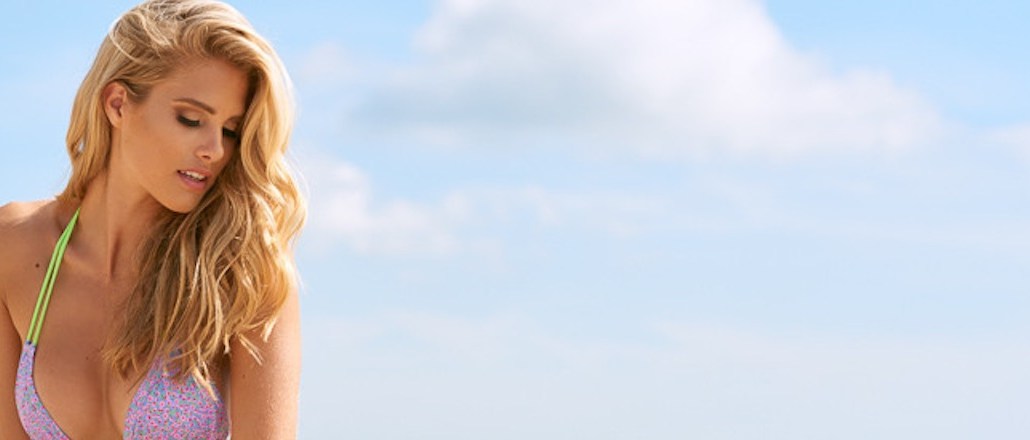
As a startup entrepreneur, Candice Galek, founder and CEO of online swimwear retailer Bikini Luxe, is building a presence on every popular social network: Pinterest, Facebook, Twitter, Instagram and even LinkedIn, where the majority of users wear business suits.
This is proving problematic. Galek has been receiving some flak for a LinkedIn post titled “Is This Appropriate For LinkedIn?” which raked in more than 40,000 views within a month (higher than some of Bill Gates’ LinkedIn posts). It’s easy to understand why: The seemingly deliberately provocative post featured a risque photo of Miss Universe contender Natalie Roser modeling one of Galek’s products. As requested, Bikini Luxe received a lot of feedback, including more than 500 comments on it. Many of them wanted the image taken down, some even suggesting Galek to “Please go back to Facebook.”

“Even though I’m not offended by Candice’s post, I understand why others are. Candice should look to another social network to make this sort of promotion aside from LinkedIn,” Jason Parks, owner of agency The Media Captain, told Digiday.
LinkedIn seems to agree. The platform momentarily erased Galek’s updates to the post and also randomly deleted her profile picture (apparently mistaking her for the model in the swimsuit), without notifying her. But bikinis are Galek’s business, so one could argue that LinkedIn is exactly where Galek’s post belongs. When pressed by Digiday, LinkedIn declined to get specific. “We ask that our members adhere to LinkedIn’s community guidelines and user agreement when deciding whether something is appropriate to share on the platform,” the network wrote in a statement.
Ad position: web_incontent_pos1
There’s lots of reading. Simply put, the platform requires users to “Be Real,” “Be Professional,” “Be Nice” as well as respect other users’ and LinkedIn’s rights. The company may change or discontinue any of its services and it can’t “promise to store or keep showing any information and content you’ve posted.”
A source who is familiar with LinkedIn told Digiday that the platform uses a set of signals to determine if a piece of content is appropriate. One of them is the number of people who have flagged the content, but it’s unclear how many is too many. “If only five users flagged my content while 500 liked it, a minority is ruining my LinkedIn posts,” said Galek. LinkedIn has since reinstated the post in its entirety.
But as so often happens with censorship, LinkedIn’s takedown was a bit of a boon for Bikini Luxe. While there’s no comprehensive analytics to measure LinkedIn performance, Galek told Digiday that from March to date, Bikini Luxe’s LinkedIn traffic was higher than its main traffic driver Pinterest, where it usually receives more than a million impressions per month. “My personal updates are getting more comments than 95 percent of Bill Gates’ posts. He has five million followers while I only have 25,000 on LinkedIn,” she said.
Ad position: web_incontent_pos2
Dale Ferreira, digital marketing consultant for SconeTent, thinks that Galek’s move is smart – whether the flurry of controversy was intentional or not – since her brand is getting more coverage from the removal of the image than the image itself. “That being said, we have to be so careful as content marketers to not be offensive in an age where we live in a world of hyper sensitive humans,” said Ferreira.
Although Galek’s bikini post went viral, The Media Captain’s Parks points out that LinkedIn isn’t really a marketing destination for consumer brands anyway. Instead, LinkedIn is more of a platform for networking, where brands recruit talent and promote their company culture.
“For most B2C brands, LinkedIn is not their first choice,” said Parks. “I think Candice knew that this bikini photo would be racy and out of the ordinary for LinkedIn.”
The swimwear entrepreneur told Digiday that in spite of the hiccup, she will continue using LinkedIn as a marketing platform. “I have gained so many connections since I wrote the post,” said Galek. “People who have a job and are financially stable are more likely to buy.”
More in Marketing

In the marketing world, anime is following in the footsteps of gaming
As marketers look to take advantage of anime’s entry into the zeitgeist, they might be wise to observe the parallels between the evolution of anime as a marketing channel and the ways brands have learned to better leverage gaming in recent years.

With the introduction of video ads and e-commerce, Roblox looks to attain platform status
Roblox is expanding into more areas than just ads in 2024. Much like platforms such as Amazon and Facebook have transcended their origins to evolve from their origins as online marketplaces and social media channels, Roblox is in the midst of a transformation into a platform for all elements of users’ virtual lives.

PepsiCo wants to remain a ‘driver of culture’ as it turns to influencers and activations amid rebrand
The soda-maker says it can translate cultural relevance into sales volume.
Ad position: web_bfu